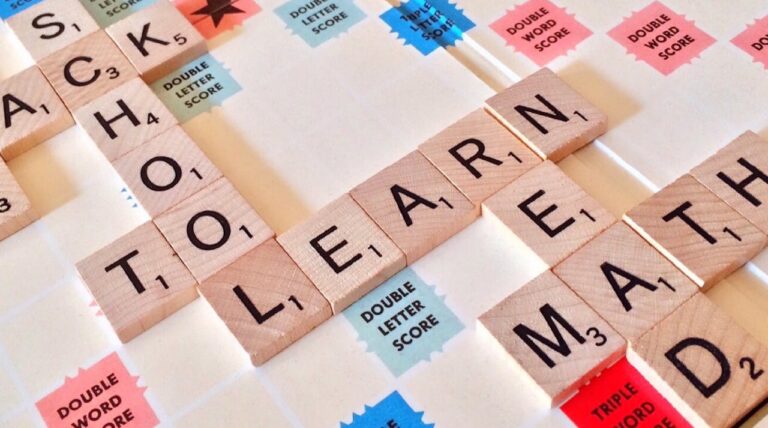NNAT – Naglieri Nonverbal Ability Test

Differences Between the NNAT-2 and NNAT-3
Wondering what sets the NNAT-2 apart from the NNAT-3? Both versions of the Naglieri Nonverbal Ability Test are designed to assess nonverbal reasoning skills in students from diverse backgrounds. However, the NNAT-3 offers updated visuals, improved usability for digital testing, and enhanced norm data compared to the NNAT-2. On this page, we break down the key differences in format, features, and how schools use each version for gifted placement decisions.
The Naglieri Nonverbal Ability Test (NNAT) is a widely used assessment designed to measure general intellectual ability, particularly nonverbal reasoning and problem-solving skills. Unlike traditional tests that rely heavily on language and academic knowledge, the NNAT uses abstract shapes and patterns to evaluate a student’s cognitive abilities, making it ideal for identifying gifted and talented students from diverse linguistic and cultural backgrounds.
What Is the NNAT Test?
The NNAT is a nonverbal assessment that evaluates a child’s ability to reason and solve problems using visual information. It was developed by Dr. Jack A. Naglieri and is often used by school districts in the United States to screen students for gifted and talented programs.
The test is typically administered to students from kindergarten through 12th grade, with different versions tailored to each grade level.
NNAT Test Structure
The NNAT consists of four main question types:
Pattern Completion – Students identify the missing section of a picture.
Reasoning by Analogy – Students determine relationships between geometric shapes.
Serial Reasoning – Students identify a pattern that progresses in a sequence.
Spatial Visualization – Students visualize how shapes can be rotated or combined.
Each version of the NNAT has 48 questions and is administered in about 30 minutes.
Why Schools Use the NNAT
Culturally fair: Since it doesn’t rely on language skills, it’s effective for students from non-English-speaking households.
Identifies potential: It focuses on reasoning ability rather than knowledge acquired in school.
Supports equity: Helps ensure gifted programs are accessible to underrepresented groups.
NNAT Levels by Grade
| Grade Level | NNAT Version |
|---|---|
| Kindergarten | NNAT Level A |
| 1st Grade | NNAT Level B |
| 2nd Grade | NNAT Level C |
| 3rd Grade | NNAT Level D |
| 4th Grade | NNAT Level E |
| 5th Grade | NNAT Level F |
| 6th Grade | NNAT Level G |
| 7th–12th Grade | NNAT Level H |
You can access free NNAT practice tests on our site to help your child become familiar with the test format and question types. Our practice materials include pattern recognition, analogies, and spatial reasoning—perfect for building confidence and boosting performance before taking the actual Naglieri Nonverbal Ability Test.
Detailed Explanation of NNAT Levels by Grade
What Differentiates Each NNAT Level?
While all levels of the NNAT assess the same core skills—pattern recognition, spatial reasoning, analogical thinking, and serial logic—each level adjusts:
Complexity of Patterns: Younger grades get simpler visual patterns, while older students solve more abstract, multi-layered designs.
Type of Reasoning Required: Lower levels focus on basic pattern completion, while upper levels include analogies and transformation of visual shapes.
Cognitive Load: As students advance in grade, the test requires greater working memory and problem-solving speed.
Breakdown of NNAT Levels
Level A (Kindergarten):
Focuses on early nonverbal reasoning. Simple patterns and large visual clues help students demonstrate basic problem-solving without needing to read.Level B (1st Grade):
Builds on Level A with more detailed images. Children are introduced to beginning analogical thinking and serial reasoning.Level C (2nd Grade):
Includes a broader variety of question types. Spatial visualization and logic become more complex.Level D (3rd Grade):
Students handle more advanced puzzles and multi-part relationships. This level requires sharper analytical thinking.Level E (4th Grade):
Includes sophisticated analogies and shape manipulations. Students must understand how patterns evolve or relate to each other in steps.Level F (5th Grade):
Challenges students with abstract visuals. Tasks may involve rotating, flipping, or predicting shapes through a series of changes.Level G (6th Grade):
Introduces more nuanced logic questions. Students need to identify and extend patterns that include multiple variables.Level H (7th–12th Grade):
The highest difficulty. This level is designed for secondary students and includes the most complex visual sequences, requiring strategic thinking and advanced problem-solving skills.
Why NNAT Levels Matter
Using level-appropriate versions of the test ensures that all students are measured fairly. For educators and parents, understanding the level helps in choosing the right preparation materials and identifying strengths and weaknesses accurately.
Proper preparation aligned with your child’s NNAT level can make a meaningful difference in their confidence and performance—especially when applying for gifted and talented programs.
NNAT Scoring Explained
The NNAT (Naglieri Nonverbal Ability Test) uses a structured scoring system to measure a student’s nonverbal reasoning ability. The score is designed to compare a student’s performance to others in the same age group nationwide, regardless of language background or academic experience.
Here are the key components of the NNAT score:
1. Raw Score
This is the total number of questions answered correctly out of 48. There is no penalty for wrong answers, so students are encouraged to attempt every question.
2. Scaled Score
The raw score is converted into a scaled score to account for variations in difficulty between different test versions and student age groups. The scaled score typically ranges from 40 to 160.
3. Naglieri Ability Index (NAI)
The NAI is a standardized score with a mean of 100 and a standard deviation of 15. It reflects how a student’s performance compares to national norms. For example:
NAI of 100 is average.
NAI of 115 or higher may indicate gifted potential.
NAI above 130 is often considered within the gifted range in many school districts.
4. Percentile Rank
This shows the percentage of students in the same age group who scored lower. For example, a 90th percentile rank means the student scored better than 90% of their peers.
What Is a Good Score on the NNAT?
A “good” NNAT score depends on the purpose of the test. For gifted program admission, schools often look for students in the 90th percentile or higher, or with an NAI of 130 and above. However, each school district sets its own qualification criteria.
Understanding the NNAT scoring system helps parents interpret their child’s performance and plan next steps—whether for additional practice or gifted program applications.
NNAT Sample Questions (16 Practice Examples)
1. Pattern Completion
A square is divided into four equal sections. The top-left is blue, top-right is red, bottom-left is blue. What color should the bottom-right section be to complete the pattern?
A. Red
B. Blue
C. Yellow
D. Green
Answer: A. Red (The colors alternate in a checkerboard pattern: blue/red, blue/red.)
2. Reasoning by Analogy
Triangle is to Pyramid as Square is to:
A. Cube
B. Circle
C. Line
D. Rectangle
Answer: A. Cube (A triangle is a 2D shape that becomes a 3D pyramid. A square becomes a cube.)
3. Serial Reasoning
You see a sequence of shapes:
Circle, Square, Circle, Square, ?
What comes next?
A. Triangle
B. Circle
C. Square
D. Rectangle
Answer: B. Circle (The sequence alternates between circle and square.)
4. Spatial Visualization
If a paper is folded in half and a hole is punched in the center, how many holes will appear when the paper is unfolded?
A. 1
B. 2
C. 4
D. 3
Answer: B. 2 (Folding in half duplicates the hole location when unfolded.)
5. Pattern Logic
Each row in a matrix follows the pattern: Shape + 1 side
Row 1: Triangle, Square, Pentagon
Row 2: Square, Pentagon, ?
What shape comes next?
A. Hexagon
B. Circle
C. Octagon
D. Star
Answer: A. Hexagon (Triangle = 3 sides, Square = 4, Pentagon = 5… so next is Hexagon = 6)
NNAT (Naglieri Nonverbal Ability Test) – Frequently Asked Questions (FAQ)
The NNAT (Naglieri Nonverbal Ability Test) is a nonverbal reasoning test used by schools to identify gifted and talented students. It evaluates visual-spatial skills through pattern completion, analogies, and spatial reasoning tasks without relying on language.
Students in grades K–12 may take the NNAT, depending on their school district. It’s commonly used for kindergarten through 3rd grade to screen for gifted program eligibility.
Not exactly. The NNAT measures nonverbal reasoning ability, which is a component of intelligence, but it is not a full IQ test like the WISC. It focuses on innate problem-solving skills.
Each section is scored on a scale from 200 to 300. The WritePlacer essay is scored from 1 to 8. Scores determine whether you’re ready for college-level work or need developmental courses.
A Naglieri Ability Index (NAI) of 130 or higher or a percentile rank in the 90th percentile or above is often considered gifted and may qualify students for advanced academic programs.
Yes, students typically have 30 minutes to complete the test, which means timing and focus are important.
You can find free NNAT-style practice questions on our website, designed to help students improve visual reasoning and build test confidence.






